SMITHSONIAN LIBRARIES AND ARCHIVES
Pedalling Through Time With Davis Sewing Machine Company
An 1896 trade catalog in our National Museum of American History Library explains how the Davis Sewing Machine Company pivoted to bike sales at the turn of the 20th century
/https://tf-cmsv2-smithsonianmag-media.s3.amazonaws.com/filer_public/25/c0/25c0b154-8924-485e-bed4-b764a72036a7/davis-sewing-machine-co-header.jpg)
Recently, I stumbled across a trade catalog that made me pause. As I looked at its vibrantly illustrated front cover, I thought of relaxing, summer days at the beach. It shows a bicyclist riding along the shoreline, a dog following closely behind, and boats in the distance. I also noticed one more thing. The name of the company refers to sewing machines while the front cover illustrates a bicycle. That observation sparked my curiosity to explore the pages within this catalog.
The catalog is titled Dayton Bicycles (1896) by Davis Sewing Machine Co. With a name referencing sewing machines, it might come as a surprise that the company also manufactured bicycles. According to this catalog, the Davis Sewing Machine Co. presented the Dayton Bicycle to the public early in the season of 1895, one year prior to this catalog.
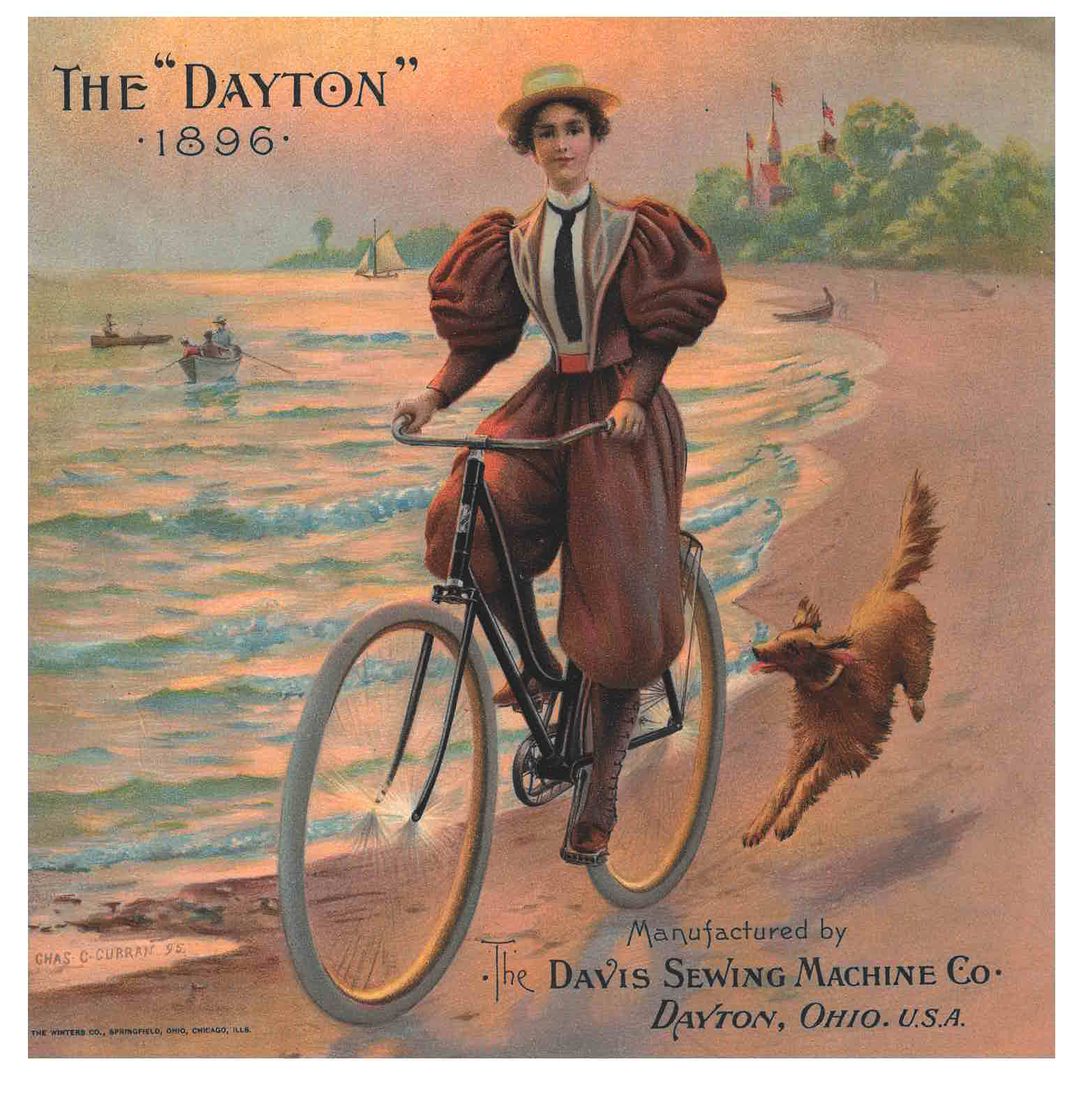
It mentions that the Dayton Bicycle was not “the product of a new and untried establishment.” Instead, the production of this bicycle resulted from “a careful and comprehensive study” of both the methods and requirements necessary for manufacturing bicycles.
It also highlights that Davis Sewing Machine Co. had already been manufacturing machinery for more than 25 years. Based on the name of the company, the machinery being referred to is presumably the sewing machine. The Trade Literature Collection at the National Museum of American History Library also includes some of their sewing machine catalogs.

This particular catalog includes several pages providing technical information and details regarding the construction and manufacture of the 1896 Dayton Bicycle. Besides images of these models, it also elaborates on specific parts of the bicycle.
The Dayton Bicycle itself was described as having “graceful lines and beautiful design” and “combining extreme strength with perfect symmetry.” Scattered throughout the pages of this catalog are a variety of illustrations showing the bicycle in action with individuals riding in such places as the beach, park, or city.
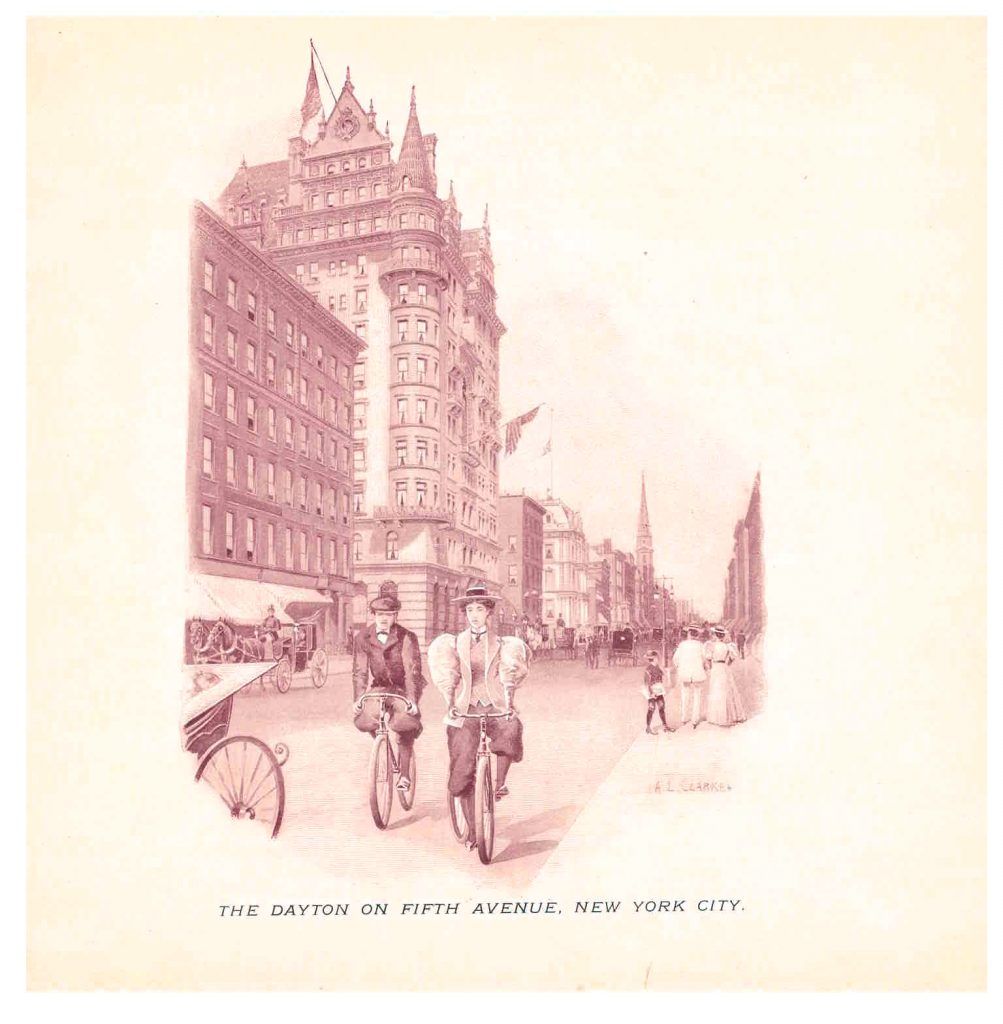
A feature of the Dayton Bicycle was its wood rims, which according to this catalog, were constructed to prevent warping, splitting, or pulling apart at the joint. Reinforced with three layers of wood, it used both a dovetail joint and lapped joint. More details and an illustration are shown below. The rims were finished in either natural wood or stained.
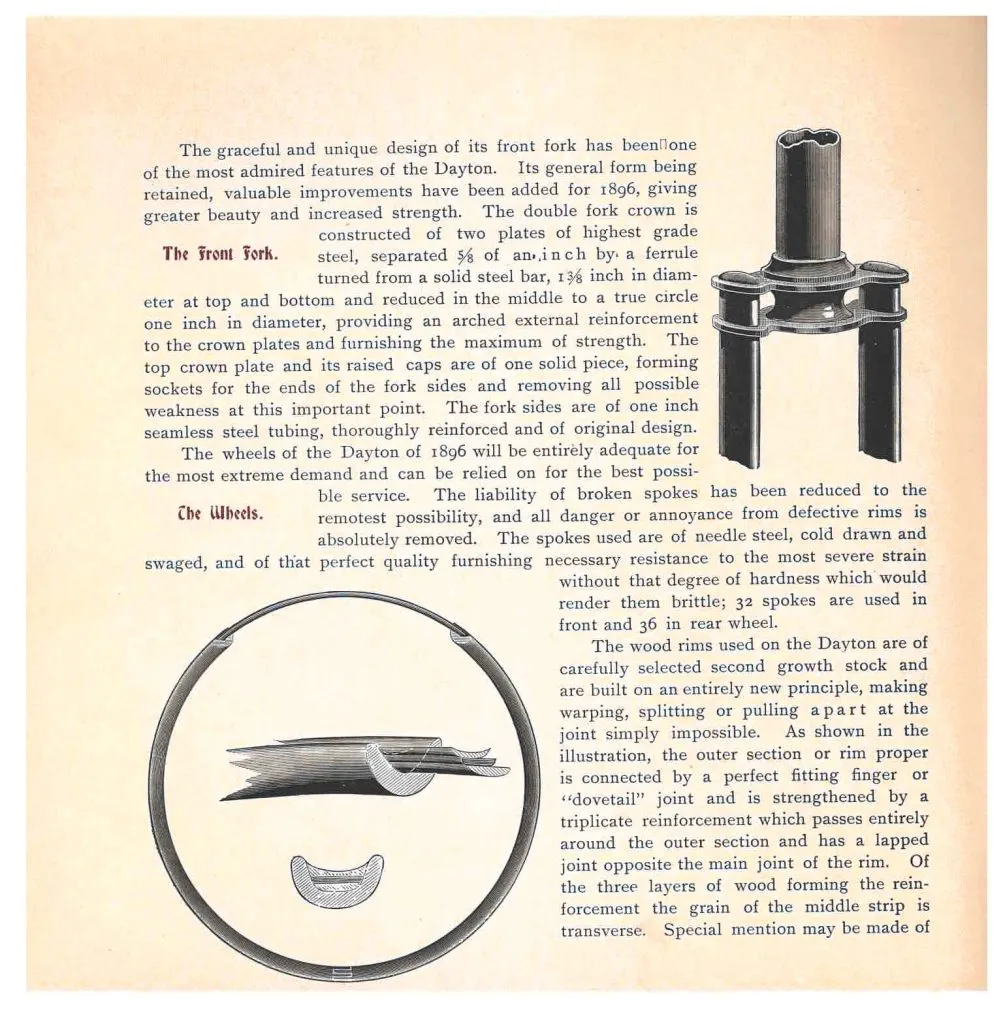
Bicyclists had a variety of handlebars to choose from, such as the plain raised handlebar and several designed for racing. The adjustable handlebar is shown below left (top image and number 7 at the bottom). This feature allowed the rider to adjust the handlebars to a variety of positions, including a drop or raised position. Adjustable handlebars were available in widths of 15, 16, 17, or 18 inches.
As for pedals, the 1896 Dayton Bicycle was outfitted with either the Grothe Pedal or Brandenburg Pedal. The various styles for these pedals are illustrated below (right), including one for racing.
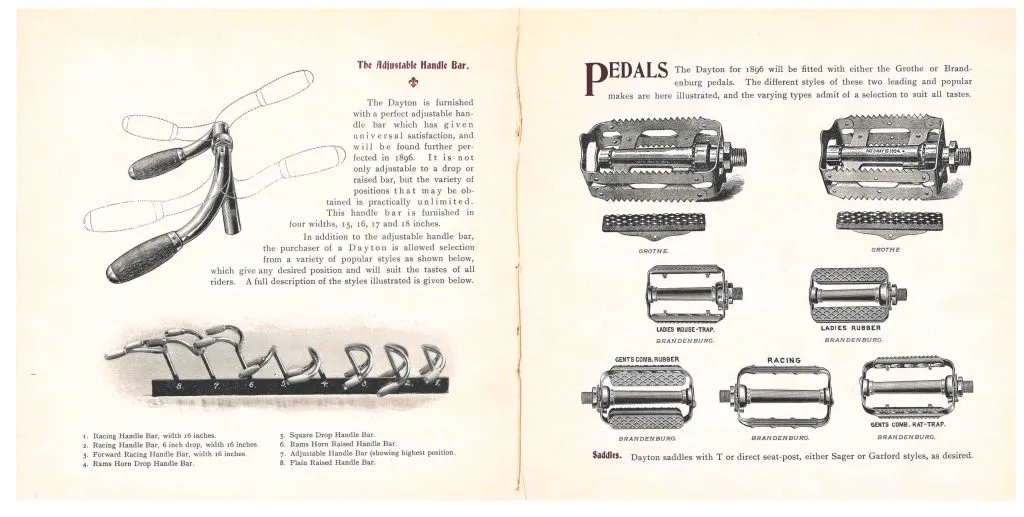

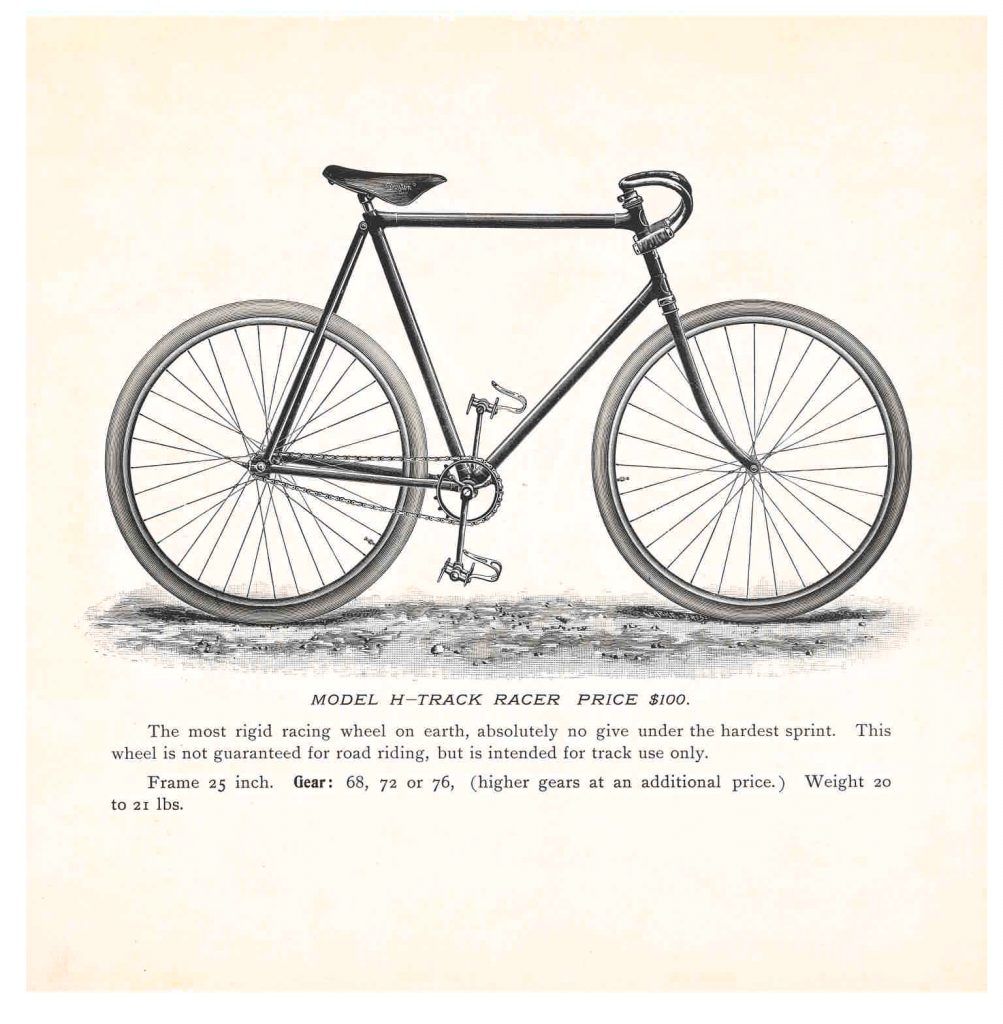
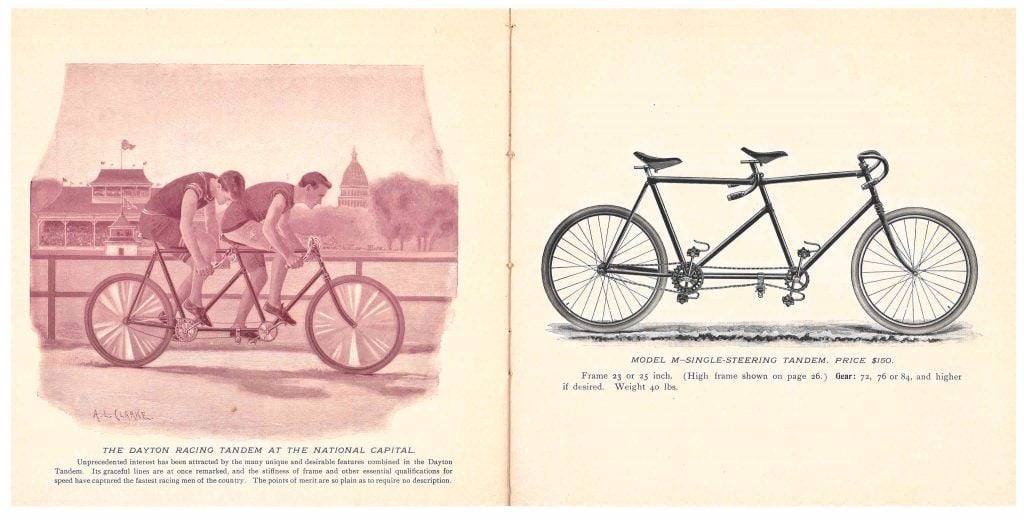
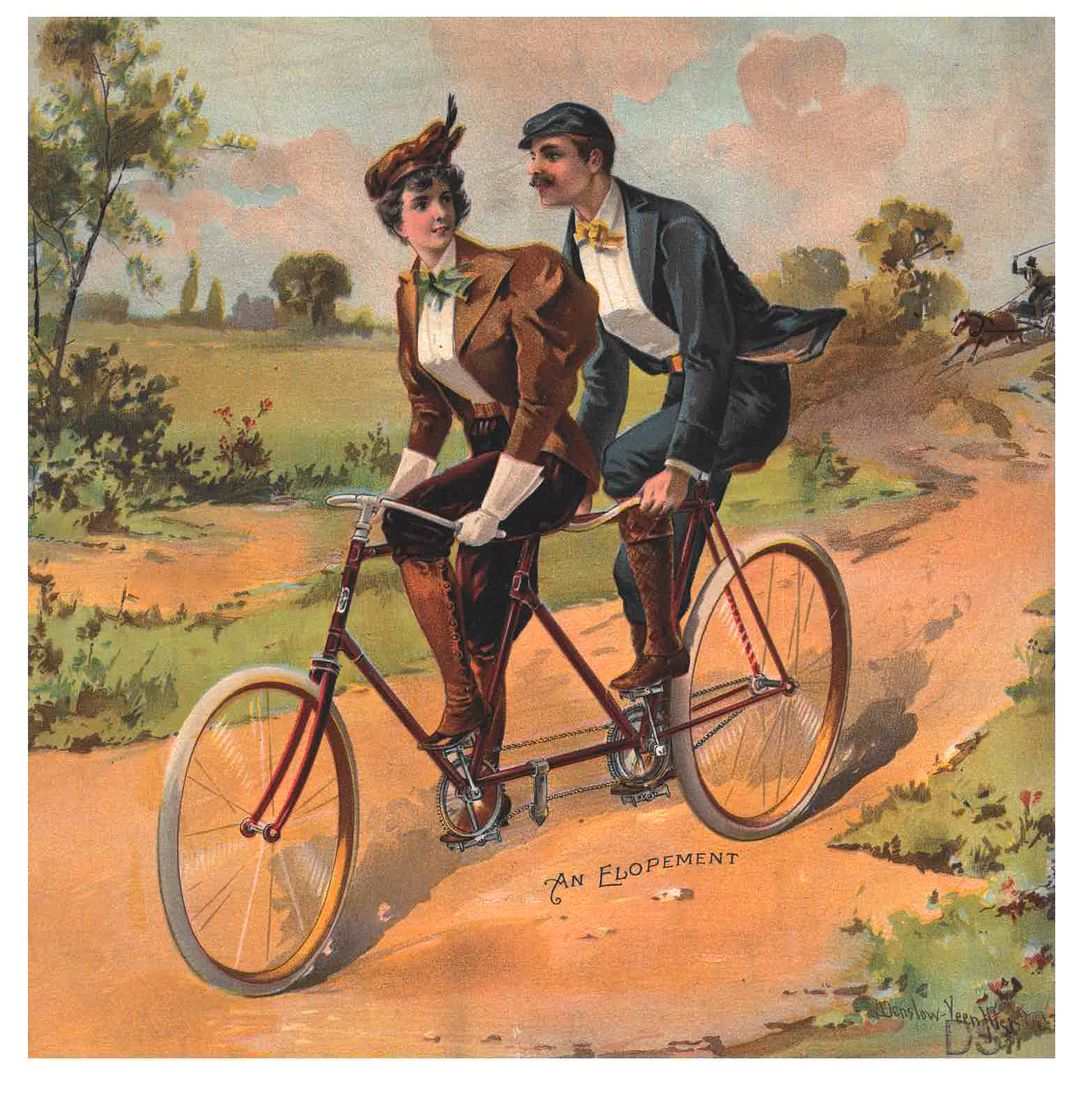
Dayton Bicycles (1896) and other trade catalogs by Davis Sewing Machine Co., including sewing machine catalogs, are located in the Trade Literature Collection at the National Museum of American History Library.

